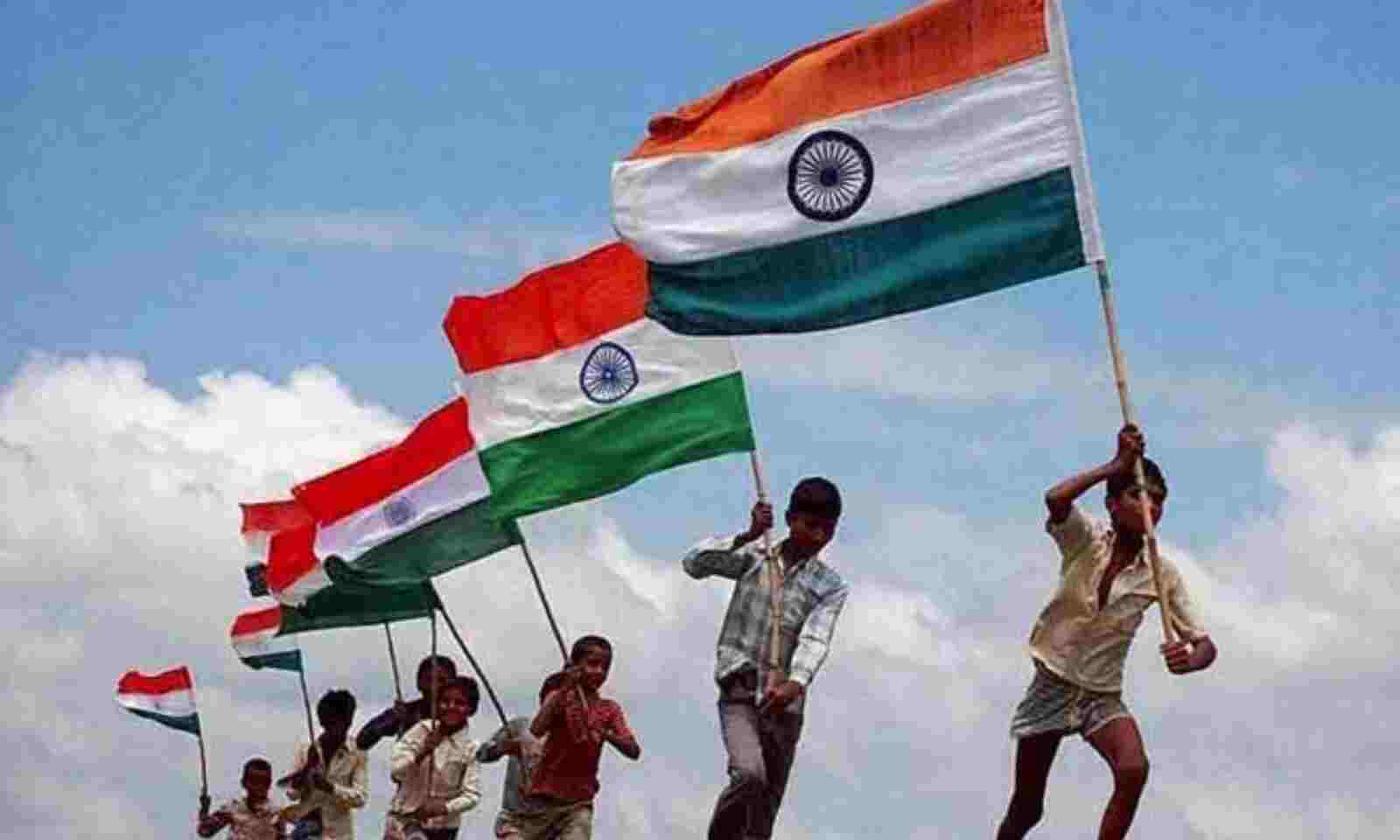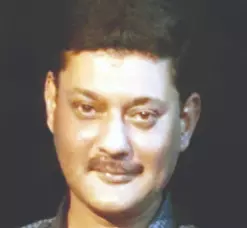Talking Shop: It began in 1947
A divide happened in India 75 years back, ending in untold blood- and heart-loss. Today, another divide is being created, with rifts and animosity growing each day

The Indian national flag has four colors – saffron, white, green and the blue of the Ashok Chakra, the colors of togetherness we first unfurled patriotically 75 years ago. Three years after independence, we had Dr Bhim Rao Ambedkar embracing all that was new in a free India, encompassing these same four vociferous colors, with members of every 'Indian' community partaking in the opportunity to create a secular Constitution. I shall delve on this today, for we are changing dramatically as a people and a society. I grew up in India and can myself see a sea-change in my lifetime itself. And we are changing more, for the worse.
Today, 75 years later, the hues and tone in India are getting scary. There is divisiveness everywhere, with a motivated and deviant section pushing their own unscrupulous and illegitimate agenda. It is just not politicians, but even the common brainwashed many people who have changed – a vagrant lot out to demolish the very foundation of our country, corrupting both the susceptible and the impervious. We are turning into moral cowards, victims perhaps of the well-being and financial wellness that India found three decades ago on the back of bold economic reforms. Today, with that well-being under threat, we are in an economic mess; a very visible one. For those that decide I am a doomsayer, let me assure you that I am being kind, for today we are staring a dire tumult in the face. Let me take you back to where we started out from, for that may give you a glimpse into the scary times we are hurtling toward.
Colors and society
For long now, we have been equating society and religion with colors. Ironically, these colors that divide India today are predominantly green, saffron, white and blue – the same colors as our national flag, which is a shining symbol of unity. We just celebrated our Republic Day and publicly rejoiced over the secularism that is the bedrock of our society, but the on-ground reality is that secularism is being ground into the dust. It is a paradox that secularism, multi-culturism and diversity are enshrined in our Constitution; I say this because what's happening on the ground is vastly different.
Further, it is an irony and absurdity that this latest societal whip is being wielded today by those very people who are supposed to rally us against any disharmony and divide – our political and religious leaders. Finally, it is a startling contradiction that the line between these two sections is thinning fast. As this line thins, those with very suspect ideas and principles are beginning to address the people from the pedestals of public office, with an official say on matters that are deeply sensitive, thus distorting the very fabric of society. In the process, society is beginning to sport a veneer of all that is suspect and surreptitious, with politicos and other leaders increasingly pursuing very personal agendas. We need to be careful, lest we slide some more into this abyss.
Remember, they are attempting to do what many others have tried to for centuries and failed – the Mughals and the British being amongst the most recent. India's secularism has stood the test of time despite all these attempts. What is really irksome is that today, these attempted death-blows on our secular fabric are coming from within, from our very own.
Unity in diversity
The first shining public display of India's secularism was witnessed at the 1948 Olympic Games, held after a hiatus of 12 years due to the Second World War. As was largely expected, India went on to win the Gold Medal in hockey. Amongst others, the Indian team was powered by Kishan Lal, the captain, Balbir Singh, who scored the most number of goals for India, Patrick Jensen, also amongst the highest goal-scorers, and Latif-ur-Rehman, who was outstanding in his gamesmanship. Also in the team were Akhtar Hussain, Leslie Claudius, Gerry Glackan, Reginald Rodrigues, Amit Kumar, Trilochan Singh, Jaswant Singh Rajput and Keshav Dutt. To rub salt into the British wounds, the team from newly-independent India thrashed the English team at their own home ground in London 4-0.
While talking sports, let's fast-forward to a game invented by the British and year 1983, when an inexperienced and underdog Indian team lifted the Cricket World Cup, beating England in the semi-finals and defending champions West Indies in the finals. It was an Indian miracle that was powered, amongst others, by Kapil Dev, Syed Kirmani, Roger Binny and Balwinder Sandhu. Other standout players in the team were K Srikkanth, Madan Lal, Mohinder Amarnath, Kirti Azad and, of course, Sunil Manohar Gavaskar. After lifting the cup, the team proudly waved the Indian tricolor at the Mecca of cricket, Lords. The trophy was not won by Hindus, Muslims, Sikhs or Christians, nor was the flag waved by them – it was unleashed by very proud Indians.
We glorious Indians
From glory in sports, let's move on to the gallantry of India's armed forces, amongst the largest in the world. The highest Indian award for gallantry is the Param Vir Chakra, which has so far been conferred upon 21 outstanding iron men in uniform. In this list is Captain Vikram Batra, who martyred himself as India threw the Pakistanis out of Kargil. Others in the list include Flying Officer Nirmal Jit Singh Sekhon, who shot down two enemy aircraft attacking India's Srinagar Air Base, and Lance Naik Albert Ekka, who achieved martyrdom during the Indo-Pak war of 1971. Then there is Company Quartermaster Hawaldar Abdul Hamid, who received the award for using his humble jeep-mounted weaponry to destroy enemy tanks during the Indo-Pak war of 1965.
Let's move on from the armed forces to the field of entertainment, where the highest honor is the Academy Awards. For Indians, Oscars have come few and far between, but even here, the winners' list is telling. Bhanu Athaiya was the first, followed by Resul Pookutti, AR Rahman and Gulzar. Who can forget Satyajit Ray, who was presented with an Academy Award for Lifetime Achievement?
If we move on to Indians who have been featured on the cover of 'TIME' magazine, that list includes Shah Rukh Khan, former Prime Minister Manmohan Singh and current Prime Minister Narendra Modi.
Our DNA fabric
Let's go back in time to when India was stitching together its Constitution. This was in itself a completely secular process, with 299 members of the Constituent Assembly involved. Amongst them were Dr BR Ambedkar, Dr Rajendra Prasad, Jawaharlal Nehru, Maulana Azad and BN Rao. Collectively with the other members, they decided to cast aside divisive boundaries, including religion, and blessed Indians with fundamental rights.
I could go on, talking about others like Govindan Gopalakrishnan, a Hindu who is fondly called India's 'mosque-man', having constructed 110 mosques for his Muslim brethren, apart from four churches and a Hindu temple. On the other side, we have an Indian Muslim, HMG Basha from Hoskote, who donated his personal land worth nearly Rs 1 crore for the construction of a Hanuman temple. This was because he found out that Hindus were having trouble offering prayers in a much smaller previously-constructed temple.
I am not even daring to delve into the achievements of people like Mahatma Gandhi, Subhash Chandra Bose, Lal Bahadur Shastri and Maulana Azad, whose contributions have literally built and nurtured our nation. Or others still like APJ Abdul Kalam, Ratan Tata, Azim Premji, Nandan Nilekani and others, who have sustained India through their personal efforts.
What triggered this line of thought today? Well, I was watching a program on social media that captured this sentiment. This set me thinking; if a young Youtuber can have enough compassion and understanding to recognize our historical culture of unity in diversity, what has gotten into the leaders of today, some of whom openly spread hatred and divide the country on religious grounds? More importantly, why are today's authorities not taking immediate and the strongest possible action against them, both to bring them to book and yank the carpet from under the feet of the many others who may walk the same path? We all know the answer, but few today dare to walk that talk openly.
The writer is a clinical analyst and communications specialist. Views expressed are personal. [email protected]



